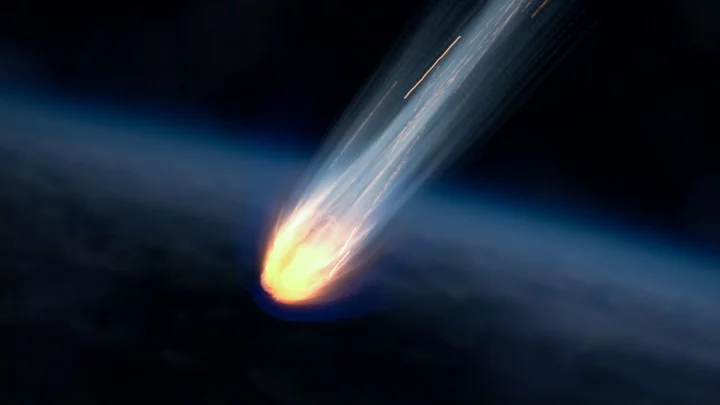
'Alien spacecraft' found at the bottom of Pacific Ocean
For years people have been looking to the skies for signs of alien life - but maybe, they should have been looking at the bottom of the ocean this whole time. A Harvard physicist has claimed that parts of an alien 'spacecraft' could have been uncovered under the sea. Professor Avi Loeb set off on a search along the bottom of the Pacific Ocean and found 50 iron pieces which originated from the IM1 meteor. IM1 crashed off the coast of Papua New Guinea and Leob believes it could contain key information in the search for life out there in the universe, saying he hasn’t discounted the idea of the pieces being evidence of a “spacecraft” from an “extraterrestrial technological civilization” which crashlanded on Earth. Sign up to our free Indy100 weekly newsletter Loeb is currently the head of Harvard’s Galileo Project, focusing on the search for aliens, and he said the fragments they found must have come from “a natural environment different from the solar system, or an extraterrestrial technological civilization.” Speaking to Fox News Digital, Loeb detailed his thoughts on the origins of the meteor fragments by saying: “Given IM1's high speed and anomalous material strength, its source must have been a natural environment different from the solar system, or an extraterrestrial technological civilization.” He added that IM1 “is actually tougher and has material strength that is higher than all the space rocks that were catalogued by NASA. That makes it quite unusual.” Have your say in our news democracy. Click the upvote icon at the top of the page to help raise this article through the indy100 rankings.
2023-06-29 21:25

Meituan Buys Co-Founder’s Months-Old AI Startup for $234 Million
Meituan is buying a co-founder’s generative AI startup for almost $234 million, a deal that gets the food-delivery
2023-06-29 18:48
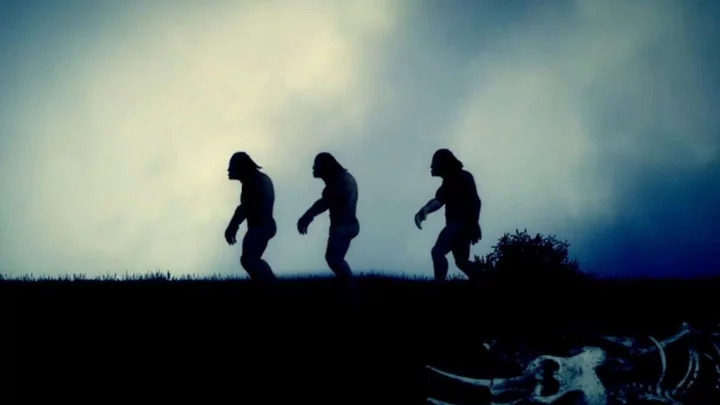
Everybody alive today came from one African country, according to study
It’s well known that all humans alive today can be traced back to a common ancestor but a study may have found where that ancestor originates. Researchers at the University of Oxford’s Big Data Institute mapped the entirety of genetic relationships among humans to create the largest human family tree ever. By combining modern and ancient human genomes data from eight different databases, the researchers were able to create a massive family tree. This allowed them to see how a person’s genetic sequence relates to another using the points of the genome. Sign up for our free Indy100 weekly newsletter “Essentially, we are reconstructing the genomes of our ancestors and using them to form a vast network of relationships,” Lead author Dr Anthony Wilder Wohns said. “We can then estimate when and where these ancestors lived.” Where they lived? Sudan, Africa. Dr Wohns told Reuters, "The very earliest ancestors we identify trace back in time to a geographic location that is in modern Sudan. “These ancestors lived up to and over 1 million years ago—which is much older than current estimates for the age of Homo sapiens—250,000 to 300,000 years ago. So bits of our genome have been inherited from individuals who we wouldn’t recognize as modern humans," Dr Wohns said. Researchers used 3,609 individual genome sequences from 215 populations and samples that ranged from 1,000s to over 100,000 years. By using a new method to compile the data, algorithms were able to predict where common ancestors were in evolutionary trees to explain some patterns of genetic variation. The results were a network of almost 27 million ancestors. “The power of our approach is that it makes very few assumptions about the underlying data and can also include both modern and ancient DNA samples,” Dr Wohns says. Not only does the data help us understand human geology better but the new method could help in other research, like medicine. “The underlying method could have widespread applications in medical research, for instance identifying genetic predictors of disease risk," Dr Wohns added. Have your say in our news democracy. Click the upvote icon at the top of the page to help raise this article through the indy100 rankings.
2023-06-29 18:27
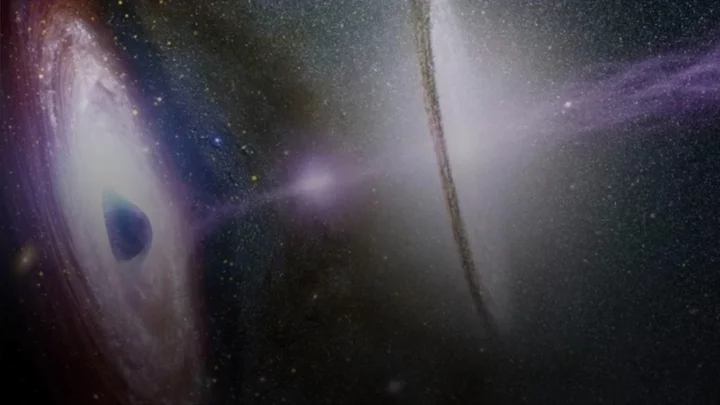
Stephen Hawking theory proved right by man-made black hole
Scientists have managed to simulate their very own black hole in their lab and witnessed how it began to glow. The black hole event horizon was created by a team of physicists from the University of Amsterdam, who used a chain of atoms in a single file to gain further understanding about the behaviour of a black hole. Its creation managed to prove Stephen Hawking's theory from 1974 where the black hole emitted a rare form of radiation. Sign up to our free Indy100 weekly newsletter They studied the properties of Hawking radiation through the creation of a black hole analog in the lab. According to Science Alert, Hawking radiation happens when "particles born from disturbances in the quantum fluctuations caused by the black hole's break in spacetime." The fact that the radiation exhibits a glow itself is in a strange space anomaly, as the event horizon of a black hole is supposed to be where neither light nor matter is able to get out. We all learn about the strength of a black hole in science class – and how we would all be inevitably sucked in as a result. This is possible due to its density within a certain range of the centre, so even an attempt at travelling beyond light speed (or any velocity in the universe for the matter) would not make this unavoidable. The fake black hole event also caused a rise in temperature that matched theoretical expectations of an equivalent black hole system, - but only when part of the chain extended beyond the event horizon, Science Alert reported. As a result, it is believed perhaps this entanglement of particles that straddle the event horizon plays a big role in generating Hawking radiation. Under simulations that began by mimicking spacetime thought of as "flat," scientists say the radiation was only thermal for a certain range of 'hop amplitudes'. So there may be certain situations where Hawking radiation can emit thermally - and could only be the case where gravity causes a change in the warp of space-time. "This can open a venue for exploring fundamental quantum-mechanical aspects alongside gravity and curved spacetimes in various condensed matter settings," the scientists wrote in their paper published by Physical Review Research. Have your say in our news democracy. Click the upvote icon at the top of the page to help raise this article through the indy100 rankings
2023-06-29 18:19

AI has revealed what infamous 'Bigfoot' footage truly is
It’s footage that’s fascinated conspiracy theorists for decades, but artificial intelligence is making people look at the most famous alleged sighting of ‘Bigfoot’ in a new light. Back in 1967, a clip known as the Patterson–Gimlin film claimed to show the mysterious creature, also known as ‘sasquatch’, walking through the Six Rivers National Forest in California. Roger Patterson and Robert Gimlin shot a figure moving in the woods in low resolution footage and claimed that they had discovered proof of the urban legend known as Bigfoot. The pair claimed at the time they tracked the figure before setting up filming equipment and capturing grainy video which looks briefly at the camera. Sign up to our new free Indy100 weekly newsletter While it was dismissed by the scientific community at the time and seen as a hoax by most people, it’s been poured over by conspiracy theorists ever since. It’s been analysed many times since, but new artificial intelligence has been used to present a clearer image than ever before. The clip has been stabilised and de-grained, and the results are clearer than ever. Social media user Rowan Cheung often shares the “latest developments in the world of artificial intelligence” and he posted the footage. Just as many conspiracists will have feared, the newly treated footage proves that it was clearly just a guy in a gorilla costume all along. Yes, we all knew that already, but this newly developed footage offers the clearest look at an infamous piece of footage yet – and people were quick to react on social media. “Nooppe! thats just a dude on his way to a costume party!” one wrote. Another said: “This is the ai work we needed.” One more said: “Just some bro out for a stroll.” “So it’s a dude in a gorilla suit?” a comment read. Artificial intelligence, it seems, has the power to surprise us when we least expect it. It’s not the first time ‘Bigfoot’ has made headlines this year, after people claimed to have discovered a sighting via Google Maps. Have your say in our news democracy. Click the upvote icon at the top of the page to help raise this article through the indy100 rankings.
2023-06-29 18:15
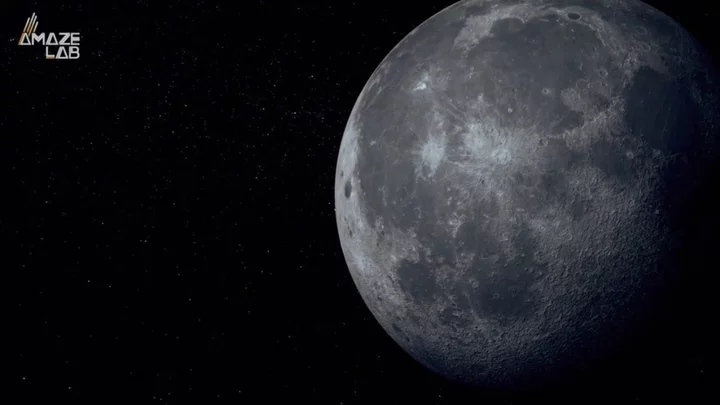
Scientists discover gigantic 'structure' under the surface of the Moon
The Moon has been a subject of awe and fascination for millennia, with its shape-shifting powers and enigmatic dark side. And though it’s the one celestial body on which man has taken (small) steps, we still have big leaps to go in understanding its potential and uncovering its secrets. However, one hidden feature of the Moon has been unearthed by scientists and it’s very, very big, and very, very heavy. Buried beneath its South Pole-Aitken basin – one of the largest preserved craters in the Solar System – is a structure which weighs at least 2.18 billion kilogrammes and measures more than 300km (186 miles) in depth and 2,000km (1,243 miles) in length. Sign up for our free Indy100 weekly newsletter The researchers who made the discovery, all based in the US, posited that the “anomaly” could be made out of metal from the core of an asteroid or oxides from the crystallisation of a magma ocean. "One of the explanations of this extra mass is that the metal from the asteroid that formed this crater is still embedded in the Moon's mantle,” lead author Peter B. James, from Houston’s Baylor University, said in a statement shared with IFLScience. Illustrating just how gigantic this thing is, he went on: "Imagine taking a pile of metal five times larger than the Big Island of Hawaii and burying it underground. That's roughly how much unexpected mass we detected.” The groundbreaking finding was made thanks to NASA’s Gravity Recovery and Interior Laboratory (GRAIL) mission, which measures changes in the Moon’s gravitational field. Data collected by GRAIL can then be used to study the internal composition of our cratered companion. The South Pole-Aitken Basin has been at the centre of numerous investigations because of just how unique it is. The region offers clues both on the interior composition of our closest satellite and its history, and who knows what other mysteries it holds... Have your say in our news democracy. Click the upvote icon at the top of the page to help raise this article through the indy100 rankings.
2023-06-29 17:52
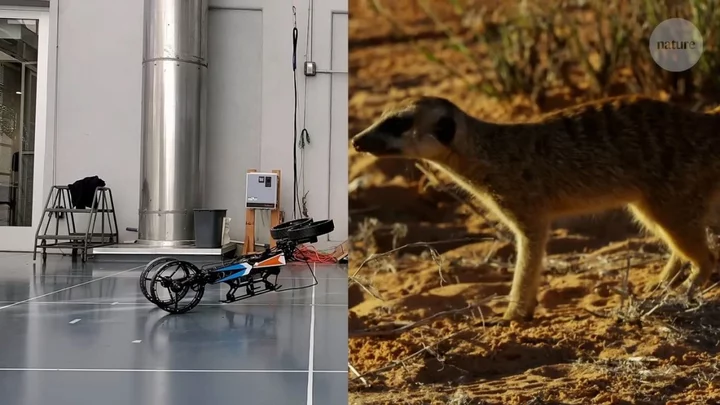
Scientists design new shapeshifting 'morphobot' and it's like a real-life Transformer
Scientists have designed a new robot that people are dubbing a 'transformer' thanks to its ability to roll, fly, crawl, crouch, balance, and tumble its way through any terrain. Its adaptability is similar to that of a number of animals, including seals, meerkats, and chukar birds. The morphobot was created by the Northeastern University in the US, and will impact the future designs of response and rescue robots, as well as space exploration vehicles. Sign up to our free Indy100 weekly newsletter
2023-06-29 16:27

Football Manager 24 will be the last of its kind - with a revolution on the way
The next release of the long-running Football Manager series of games - Football Manager 24 or FM24 - will be the last of its kind. This year's edition, the 20th instalment of Football Manager (where funnily enough, you act as a football manager for one of the world's many football clubs), will bring an end to the current iteration of games - and that's a promise directly from studio manager of Sports Interactive; Miles Jacobsen. With FM23, it seemed like the games change to digitize the behind-the-scenes of a football club had hit an apex - a rather boring apex for consumers. Instead of the growing addition of features that had underlined each new edition, FM23 simply existed as a slightly better FM22. And that was echoed by Jacobsen in a blog post for SI, who in response to FM23's reception has agreed that FM24 will simply bookend the series as the pinnacle of Football Manager. A complete edition. One where you can finally transfer a save from the previous game so your 400 hours of work doesn't go to waste. Sign up to our free Indy100 weekly newsletter "Football Manager 2024 will be the 20th game in Sports Interactive’s Football Manager series, and will be the last of its kind," said Jacobsen in his post. "It’s a love letter to football and the FM series as we know it. It’s the closing of this chapter of our history. You can expect a host of improvements, big and small, both in new features and revamps to existing areas of the game." But is Football Manager ending? No chance. In fact, it might be better than it has ever been by the time FM25 arrives, which will start a new chapter for the series. As part of a set of changes made to the technology powering the games, Sports Interactive's desire to revamp the engines behind FM led to the formation of 'Project Dragonfly' which would deliver a new vision for the game. However, the pandemic and multiple issues led to this being pushed back from FM22, released in 2021, to Autumn 2025. This previously unknown four-year delay will now herald and entirely new Football Manager, in a new Unity-powered engine, promising better graphics across the board and rehauled animations. "In simple terms, FM25 will have a significantly better-looking matchday experience - both on the pitch and the supporting stadium environments, alongside a vastly improved user interface that will dramatically improve how you navigate through screens and access all the information available to you as manager. We’ll also have new technology for Newgens and manager creation which are already looking really promising at this early stage," added Jacobsen. Women's football will also be added - and don't worry, your saves will continue to be transferrable. It's all change for one of the biggest series in the history of gaming. Have your say in our news democracy. Click the upvote icon at the top of the page to help raise this article through the indy100 rankings.
2023-06-29 00:27
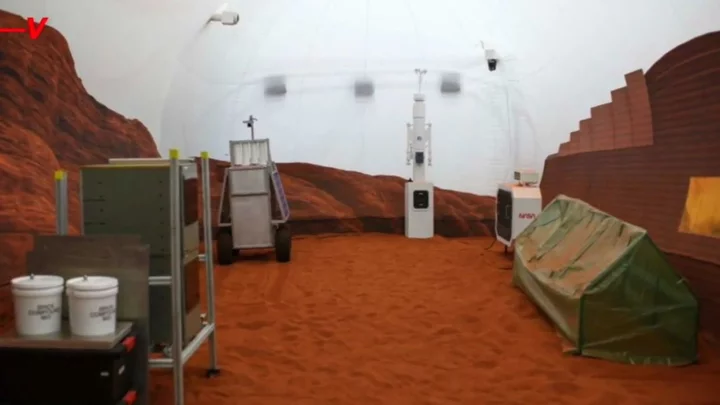
Four Nasa volunteers are living on 'virtual Mars' for the next 12 months
Would you sign up to live in isolation for a year, all in the name of furthering scientific research? Probably not, we’re guessing, but that’s exactly what four NASA volunteers have agreed to do over the next 12 months. The participants will live in an environment created to simulate conditions on the surface of Mars as part of NASA's Crew Health and Performance Exploration Analog for 378 days. The people involved are research scientist Kelly Haston, structural engineer Ross Brockwell, emergency medicine physician Nathan Jones and US Navy microbiologist Anca Selariu. Sign up to our free Indy100 weekly newsletter The simulation has been built at the Johnson Space Center in Houston, Texas, and will see the four volunteers undertake a series of tasks as part of the exercise. Data collected over the next 12 months will help to inform future missions to send astronauts to Mars. During that time, the guests will take part in activities such as crop growing as well as simulated spacewalks and other operations. The 3D-printed hub they’ll spend their time in contains a kitchen, sleeping areas, two bathrooms as well as work and recreation spaces. The mission will also see the guests faced with simulated obstacles, which are designed to test responses to equipment failure, communication delays and other issues. Speaking at a recent briefing, the mission's principal investigator at NASA Grace Douglas said: “Thank you all for your dedication to exploration. Our best wishes go with you." Haston also spoke, calling her fellow participants an "amazing group of dedicated individuals who feel very passionate about space exploration and science." "The crew has worked so hard this month to get ready for this mission," Haston added. "It has been very special to be a part of such a tremendous group of scientists and specialists from a diverse set of backgrounds working together to bring CHAPEA 1, the first of three missions, to reality." Have your say in our news democracy. Click the upvote icon at the top of the page to help raise this article through the indy100 rankings.
2023-06-28 21:59
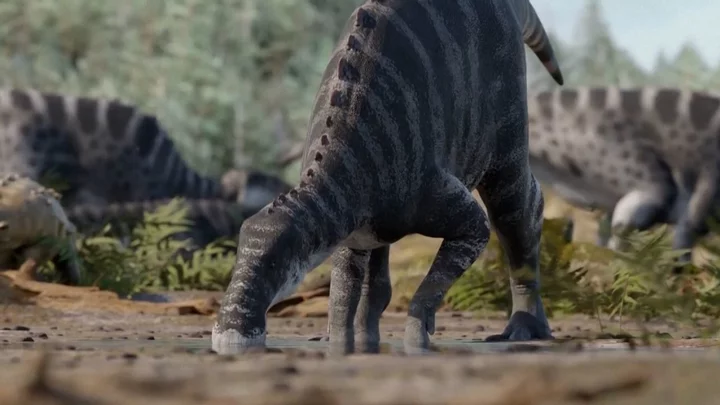
Scientists claim human ancestors lived alongside dinosaurs
It turns out that human ancestors and dinosaurs could have actually co-existed, according to new research. Scientists have produced a study which suggested that placental mammals were around before the asteroid that brought an end to the Cretaceous period hit Earth 66 million years ago. A new paper published in the journal Current Biology claims that fossil records of placental mammals suggests that our ancestors roamed the Earth before the extinction event, and later flourished due to the lack of competition from dinosaur species afterwards. According to the research, primates evolved shortly before the asteroid hit. Sign up to our free Indy100 weekly newsletter Lead author Emily Carlisle of Bristol’s School of Earth Sciences said: “We pulled together thousands of fossils of placental mammals and were able to see the patterns of origination and extinction of the different groups.” Carlisle added: “Based on this, we could estimate when placental mammals evolved.” “The model we used estimates origination ages based on when lineages first appear in the fossil record and the pattern of species diversity through time for the lineage,” co-author Daniele Silvestro from the University of Fribourg shared. While we don’t have a full picture of what human ancestors looked like at that time, it’s thought they “were small and squirrely”. Carlisle said: “Unfortunately we don’t know what our placental mammal ancestors would have looked like back then. “Many of the earliest fossils of placental mammals are quite small creatures such as Purgatorius – an early ancestor of primates – which was a small burrowing creature a bit like a tree shrew. So it’s likely that many of our ancestors were small and squirrely.” Have your say in our news democracy. Click the upvote icon at the top of the page to help raise this article through the indy100 rankings.
2023-06-28 19:56

What is Only Up? The game which is taking players hours or seconds to complete
The online gaming world has a new obsession, with a game called Only Up where you simply have to keep climbing up a series of random objects until you reach space. The game sounds relatively straightforward as anyone who has even the most basic concept of videogames knows how to climb up various structures. However, Only Up does not make the game easy for players as the seemingly infinite amount of objects range from pipes, bridges and trampolines but even the slightest of mistakes can end in disaster sending the players plummeting all the way back to the start of the game. Only Up was developed by SCKR Games and released in May 2023. It is available to play on Steam for the price of £8.50 ($10.80). Sign up to our free Indy100 weekly newsletter The game has gone viral thanks to high-profile streamers such as Adin Ross, Hasan Piker and iShowSpeed playing the game on their respective streams. iShowSpeed, who has 17 million followers on YouTube, attempts to play the game have proved to be particularly entertaining. At one point he lost 8 hours of progress. Thankfully, while playing the game on Tuesday the 18-year-old was able to complete the game in just under 5 hours. The most impressive run on the game so far has come from streamer Shade managed to find a glitch which allowed him to complete it in just 33 seconds. Whether you want to complete the game properly or use the glitch is your call but have fun regardless. Have your say in our news democracy. Click the upvote icon at the top of the page to help raise this article through the indy100 rankings.
2023-06-28 17:46

The Heat Dome Scorching Texas and Mexico Is About to Spread
The heat that has set records across Texas and Mexico will be spreading across the central and southern
2023-06-28 05:52
